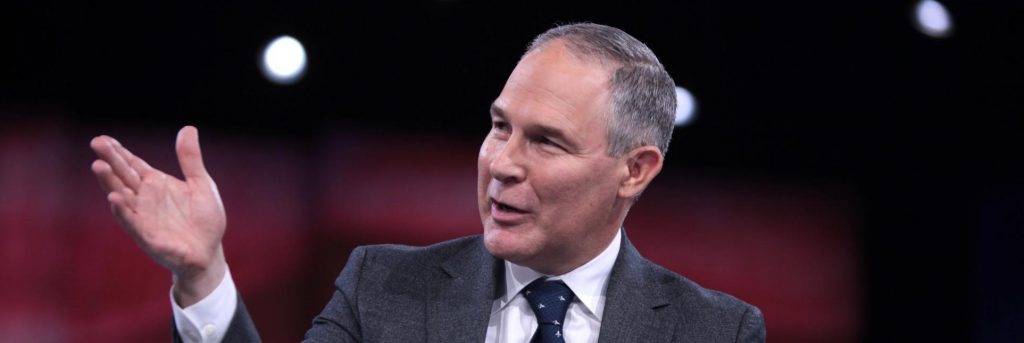Lets dig into the latest jobs news …
Coal Jobs Aren’t Coming Back | Newsweek
Following the swift and pronounced exit by the United States from the Paris Agreement, the future of the country’s energy jobs was put into immediate question (among other things). One of the central tenants of President Donald Trump’s pre-election campaign was the return of more traditional energy jobs to the U.S., namely in the coal industry. While many of Trump’s campaign promises have not yet come to fruition, his direct action in favor of these jobs has been fairly immediate. Early into his tenure, Trump rolled back a myriad of Obama-era protections in the name of job creation, with the exit from the Paris Agreement the most recent move under the impression of reinvigorating the depleted coal industry.
The industry itself has become a lynch-pin in political campaigns despite its low-number of actual employees. The coal industry features roughly 50,000 employees according to the Bureau of Labor Statistics—a figure less-than half the number of Americans who work at car washes. However, the symbol of coal in the U.S. is much more intricately linked to its immediate past, which works well for political campaigning.
Environmental Protection Agency Administrator Scott Pruitt appeared on NBC’s Meet the Press on June 4 to discuss the roaring success coal has seen in recent months. During the program, he claimed “We’ve had over 50,000 jobs since last quarter—coal jobs, mining jobs—created in this country. We had almost 7,000 mining and coal jobs created in the month of May alone.” Especially considering the BLS only has 50,000 coal jobs on record, it’s not surprising that Washington Post fact checker Glenn Kessler found the numbers were inflated.
The careful portion Kessler points out is Pruitt’s reference to “mining jobs.”
But the biggest problem with Pruitt’s statistic is that most of the gain in “mining” jobs has nothing to do with coal. Most of the new jobs were in a subcategory called “support activities for mining,” which accounted for more than 40,000 of the new jobs since October and more than 30,000 of the jobs since January. Here’s that BLS data.
Despite the major symbolic move by the U.S. and the potential spin, it doesn’t mean alternative energy is going anywhere, especially considering solar and wind is now cheaper than coal. This means more opportunity for alternative energy solutions in the MBA community at large.
Why Aren’t American Teenagers Working Anymore? | Bloomberg
For Baby Boomers and Generation X, the summer job was a rite of passage. Today’s teenagers have other priorities. Teens are likeliest to be working in July, according to data from the Bureau of Labor Statistics that’s not seasonally adjusted. In July of last year, 43 percent of 16-to-19-year-olds were either working or looking for a job. That’s 10 points lower than in July 2006. In 1988 and 1989, the July labor force participation rate for teenagers nearly hit 70 percent.
10 MBA Programs With The Highest Signing Bonuses | U.S. News & World Report
The most recent business school-centric list from U.S. News highlights the best average signing bonus’ offered to grads. Coming in first, perhaps not surprisingly, was The Wharton School at the University of Pennsylvania. MBA graduates there saw an average signing bonus of $33,433 among the 420 full-time students that earned a bonus. Following in second place was the Stern School of Business at New York University and the Columbia Business School. Stay tuned to MetroMBA for a more in-depth analysis of the ranking, coming soon.
Why Startups Shouldn’t Chase Media Buzz | Harvard Business Review
Just three years ago, there was steam picking up with Ello—a new social media platform that would maybe rival Facebook. However, it quickly followed the outcome of Google+: energy was high, execution was low. \ The non-advertising platform was exciting at first and generated huge buzz. However, “Ello was not equipped to handle such a high level of traffic, resulting in a bad experience for some users. Furthermore, the site was still bare bones and many users who came expecting similar features to Facebook were disappointed.”
Babson and Indiana University researchers Andrew Zacharakis and Alisa Jno-Charles found that “a higher percentage of the media coverage garnered by successful companies was negative—4.5 percent compared to 2.6 percent for failed companies. This doesn’t mean that ‘All press is good press,’ but that press is a good sign your company is successful enough to attract newsworthy, skeptical coverage that goes beyond PR puff pieces.
The two note that the best time for large-scale press coverage comes after the company begins to gain traction with potential to scale.
U.S. Employers Add 138,000 Jobs In May, Signaling Hiring Slowdown | Daily News
Overall, the U.S added roughly 138,000 jobs in the month of May, which is slightly below expectations. However, unemployment fell down to 4.3 percent in the country—a 16-year low.
Based on those latest numbers, job gains will have averaged 121,000 over the past three months. That is far less than then the average of 181,000 over the past 12 months and the average of 187,000 a month in 2016, former President Barack Obama’s last year in office and the year during which Trump repeatedly blasted his predecessor’s economic record.
Restaurant, construction and health care saw the largest gains, while “manufacturers, retailers and governments shed workers during the month.”
